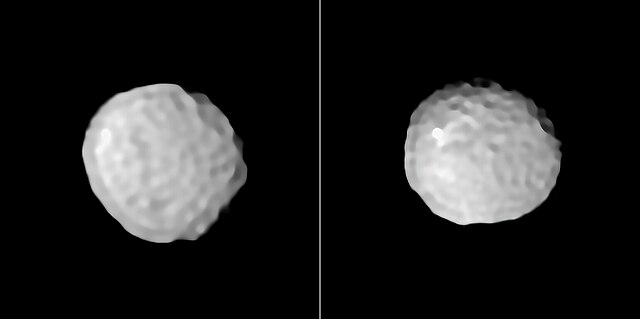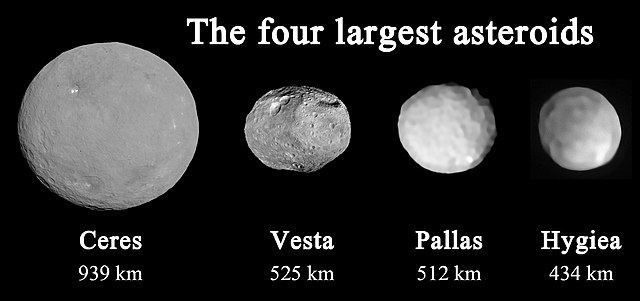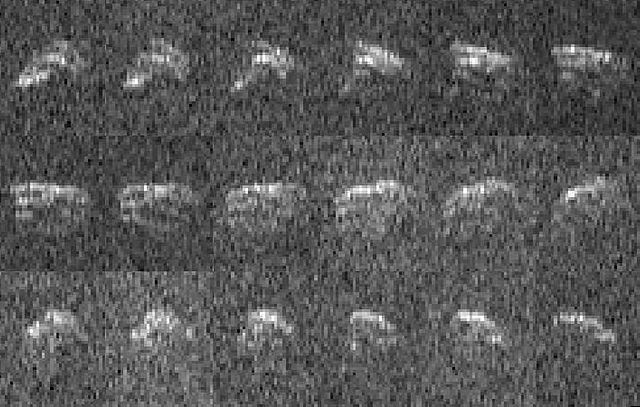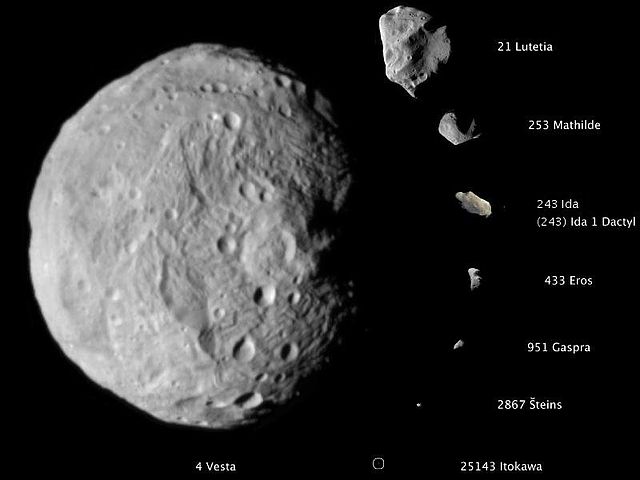Pallas is the third-largest asteroid in the Solar System by volume and mass. It is the second asteroid to have been discovered, after Ceres, and is a likely remnant protoplanet. Like Ceres, it is believed to have a mineral composition similar to carbonaceous chondrite meteorites, though significantly less hydrated than Ceres. It is 79% the mass of Vesta and 22% the mass of Ceres, constituting an estimated 7% of the mass of the asteroid belt. Its estimated volume is equivalent to a sphere 507 to 515 kilometers in diameter, 90–95% the volume of Vesta.
High-resolution images of the north (at left) and south (at right) hemispheres of Pallas, made possible by the Adaptive-Optics (AO)-fed SPHERE imager on the Very Large Telescope (VLT) in 2020. Two large impact basins could have been created by asteroid family–forming impacts. The bright spot in the southern hemisphere is reminiscent of the salt deposits on Ceres.
Relative sizes of the four largest asteroids. Pallas is second from right.
An ultraviolet image of Pallas showing its flattened shape, taken by the Hubble Space Telescope in 2007
Objects considered for dwarf planet status under the IAU's 2006 draft proposal on the definition of a planet. Pallas is second from the right, bottom row.
An asteroid is a minor planet—an object that is neither a true planet nor a comet—that orbits within the inner Solar System. They are rocky, metallic, or icy bodies with no atmosphere. The size and shape of asteroids vary significantly, ranging from small rubble piles under a kilometer across to Ceres, a dwarf planet almost 1000 km in diameter.
2013 EC, shown here in radar images, has a provisional designation
A composite image, to the same scale, of the asteroids imaged at high resolution prior to 2012. They are, from largest to smallest: 4 Vesta, 21 Lutetia, 253 Mathilde, 243 Ida and its moon Dactyl, 433 Eros, 951 Gaspra, 2867 Šteins, 25143 Itokawa.
Vesta (left), with Ceres (center) and the Moon (right) shown to scale
Phobos








